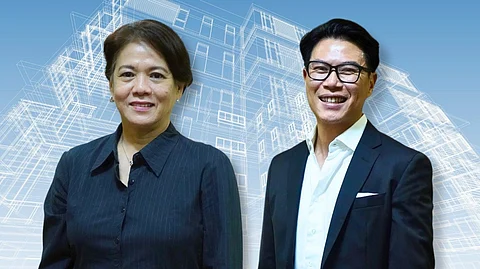
- NEWS
- the EDIT
- COMMENTARY
- BUSINESS
- LIFE
- SHOW
- ACTION
- GLOBAL GOALS
- SNAPS
- DYARYO TIRADA
- MORE

Whenever one enters a space, it is always to fulfill the purpose of being there. This is true of studying at a school, working at an office, living in a home, and shopping at malls.
Over the years, the purposes of these spaces have evolved to the point where they have been integrated into our lifestyles.
Enter Architect Daniel Terence Yu, president of the Philippine Institute of Architects (PIA) and president and CEO of Visionarch.
DAILY TRIBUNE invited him and Ma. Cynthia Naval, vice president for professional practice of the Philippine Institute of Architects, paid a visit to our humble office.
The interview with the two ace architects was spent on the sharing of stories of nostalgia and hopes for a united PIA.
In 2022, a landmark project called One Ayala surprised commuters. Only two years after the pandemic, a solution for more convenient metro travel was introduced.
One Ayala is a transport hub that connects MRT-3 Ayala Station, the Ayala EDSA Carousel stop, and surrounding offices and malls in the Ayala district.
It was a project headed by Architect Terence, one of his many iconic works that have helped ease traffic congestion, mindfully designed to co-exist with the demands of a career-driven life in Metro Manila while keeping enjoyment in mind.
When asked about his most memorable project, he could not choose just one and instead shared the ecstatic feeling “when you see people on the buildings you designed.” For Architect Yu, that is the ultimate fulfillment after every project.
He recalled the days of building large malls, wondering how such massive spaces could be filled with people. Yet, on opening day, within the first five minutes, the spaces were alive with crowds.
Spaces challenge
From designing large-scale builds to maximizing compact spaces, Architect and mentor Naval thrives on her next challenge. Naval taught her students that today’s 150-square-meter projects are the equivalent of the 400-square-meter projects of the 1990s.
She favors creating family homes that are functional yet uncompromising despite size restrictions. A parking space, three bedrooms, and even a dirty kitchen, she can make it happen. “This is called the ingenuity of an architect with lots of constraints,” she said.
In these designs, she has observed an evolution in family living. The living room is no longer the central gathering place. With busy work schedules, even in hybrid setups, the dining room has taken on a greater purpose. It is now the heart of the home where families connect through meals, whether breakfast, dinner, weekend lunch, or merienda.
Today’s architects design this space with even greater care to nurture family bonds.
On sustainability, both architects emphasize that it has always been part of good design, though they are glad it is now strongly promoted. In the past, installing water recycling systems in malls was prohibitively expensive, and solar panels were costly and difficult to source.
Public awareness and demand for eco-friendly solutions have empowered architects to integrate green initiatives into their designs.
They hope that government support will continue, not just through local government units facilitating access roads to eco-builds but also through national legislation that champions sustainability and safety.
As leaders of PIA, Yu and Naval have two primary purposes: to preserve and to mentor. Preservation includes the restoration and upkeep of heritage structures across the country, from art deco schools to churches designed by National Artists and homes converted into museums.
They stressed that while modern towers are impressive, heritage buildings are part of our history. These structures withstood wars, built without AI or modern machines, relying instead on skilled labor and carefully sourced materials that continue to stand the test of time.
Mentorship is equally essential. With at least 1,500 members and an annual convention, PIA president Yu envisions reaching the next generation of members and guiding them not only in their careers but also as future leaders in the nation’s evolving design landscape.
Next year, they are planning Connected Creativity, a gathering that will bring together interdisciplinary practitioners to learn from one another and strengthen trust in the industry.
The vision for PIA is clear: remove what no longer serves, continue what works, and move forward with innovation. With leaders like Architects Yu and Naval steering the course, the organization is shaping a future where architecture preserves history, responds to the needs of the present, and creates sustainable spaces for generations to come.
